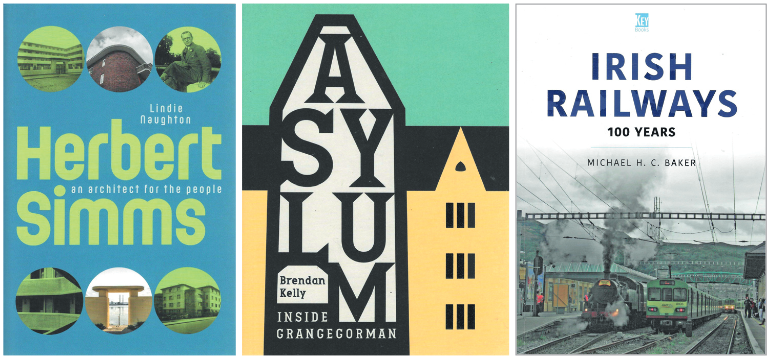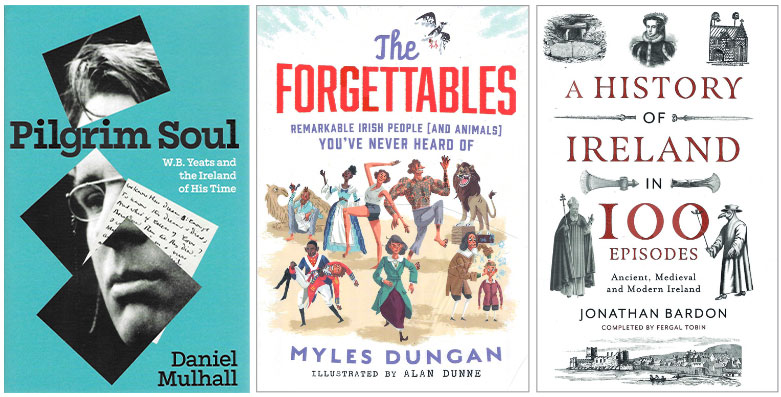By Daragh Fitzgerald
For those interested in housing, the dignity of home and solutions to this incessant plight, look no further than Lindie Naughton’s Herbert Simms: an architect for the people for both information and inspiration. Even if you are unfamiliar with the name Herbert Simms, the chances are that you are acquainted with his work—he is the architect behind many of the iconic flats across the capital, such as Oliver Bond House, Marrowbone House and, my personal favourite, Chancery House, which are all as central and valid parts of Dublin’s architectural tapestry as its Georgian and Edwardian heritage. Naughton places Simms’s career within the longue durée of urban development in Dublin and the challenges this entailed—the protagonist himself doesn’t appear until 70-odd pages in—and the book is all the better for this. Simms was appointed Dublin’s first housing architect in 1932, right when the new Fianna Fáil government was embarking on a programme of slum clearance following a decade of Cumann na nGaedheal governance that saw more private builds than public, with privately owned properties often being built on corporation land (stop me if you’ve heard this one before!). Across the next sixteen years Simms’s efforts led to the construction of over 17,000 social housing units for the citizens of Dublin, while he was also in charge of rescue and demolition efforts following German air raids during the Emergency, literally working himself to death, as attested in his suicide note. Just like his designs that remain standing, this book is a fitting tribute to a remarkable man.

One Dublin institution no longer standing as it once did is Grangegorman District Asylum. Ireland once built and filled more beds in asylums per capita than any other country globally, and the history of Grangegorman Asylum in particular, and the asylum system in Ireland more broadly, is documented in Brendan Kelly’s Asylum: inside Grangegorman. Designed by Francis Johnston, who was the architect behind the GPO, Grangegorman was a pioneering institution, leading the way in treatments for ailments of the mind in Ireland. Nevertheless, Grangegorman and asylums like it were social and economic institutions too—employing tens of thousands of individuals across the island in areas where little alternative employment was available. As such, they could be sucked into the political clashes of their time, with staff at Monaghan District Asylum occupying the institution, declaring a soviet and operating under a red flag in January 1919, while the following year staff at Grangegorman (then called Richmond) pledged their allegiance to Dáil Éireann. A book primarily about people, Asylum is full of personal stories of the patients who passed through the institution, documenting the loneliness, isolation and sadness that characterised much of their time there, while also highlighting the noble and well-intentioned efforts of the staff to care for the mentally ill, destitute, intellectually disabled and others labelled as ‘strange’ or ‘different’ in Irish society.

Train enthusiasts, along with fans of public transport, can marvel at the wonders of Ireland’s once-great rail network in Michael H.C. Baker’s Irish railways: 100 years, which provides a window nto a time when one could travel by rail to places as remote as Connemara, Buncrana and Bantry—the past is a foreign country! This book is predominantly picture-based and is laden with beautiful images of trains, stations, railways and passengers, collectively charting the transformations in and decline of the rail industry in Ireland, which was dealt fatal blows by partition and the motor-car lobby.
Those intrigued by Daniel Mulhall’s article in the last edition of History Ireland on William Butler Yeats’s 1923 Nobel prize and the context surrounding it should read his latest book, Pilgrim soul: W.B. Yeats and the Ireland of his time, which casts a cold eye on the life and works of the poet through the prism of Ireland at the time, his interactions with Irish nationalism and later the Irish Free State. Yeats was unique in the Anglophone literary world in that he was a nineteenth-century writer whose work continued to flourish after the Great War and into the modernist era—which Mulhall puts down to Yeats’s continuous involvement in Irish affairs. The book contextualises many of Yeats’s works, including my pick of the bunch, The Second Coming, while throughout the text Mulhall provides personal anecdotes from his career as a globe-trotting diplomat that testify to the worldwide appeal of the poet’s writing and his enduring popularity.

Bookworm was blessed to receive two anthologies for review this edition, the first being Myles Dungan’s The forgettables: remarkable Irish people (and animals) you’ve never heard of, a fantastic collection of biographies of intriguing heroes, villains and everything in between aimed at a younger audience, i.e. future readers of History Ireland. Dungan does the Lord’s work in introducing figures like Mother Jones and Violet Gibson to the next generation of history-lovers, while older readers should learn plenty from the book too—I am ashamed to say that I had never heard of Barbara Retz, the Mormon republican anti-Nazi, until reading The forgettables, nor had I come across William McCrum, the Armagh goalkeeper who invented soccer’s penalty kick.
The other anthology under Bookworm’s microscope is the late Jonathan Bardon’s A history of Ireland in 100 episodes, which is magisterial in its breadth, prose and explanatory power. Bardon was a regular contributor to History Ireland magazine and hedge schools, and this book illustrates just why he is sorely missed. A history of Ireland in 100 episodes is primarily based on scripts for BBC Radio Ulster’s A short history of Ireland, and each episode is a self-contained narrative of a particular incident or period of Irish history, full of complexity and nuance. Taken all together, however, they coalesce to form a mega-narrative of Irish history from the Ice Age to the crash, a mighty feat accomplished without leaning into cliché, conveyed in an authoritative and eloquent style.
One of the episodes touched on in Bardon’s book is the Fenian Rising of 1867, which is discussed further as the ‘Battle of Tallaght Hill’ in Albert Perris’s A ramble about Tallaght: history, people, places. Perris documents the history of his native Tallaght through the centuries to the present day, covering topics like Tallaght’s Big Houses, the revolutionary period in the area and, later, the success of the chocolate factory, Urney Chocolate Ltd, which produced confectionaries like ‘Leprechaun Toffee’ and ‘Colleen Kisses’ that sound straight out of the duty-free shop in the airport. One of the text’s many curious individuals is Dr Otto Glaser Jr, who surely deserves a book of his own. Born in Austria in 1926, Otto Jr was spirited out of the country by his parents for his safety following the 1938 Anschluss with Nazi Germany, since the Glasers were of Jewish ancestry. Otto Jr ended up at Blackrock College in Dublin, before receiving a doctorate in atomic physics and founding Telectron Ltd in Tallaght, a pioneer in the Irish telecommunications industry. What a life!
Another familiar name in History Ireland is historical geographer Arnold Horner, author of Mapping south Kerry: 450 years of a changing landscape. Covering the parts of the Kingdom south of the River Maine, this book documents and explains a wide variety of maps of this region produced over the centuries for a variety of reasons, from as far back as Ptolemy to a modern 3D model, illustrating how these maps cumulatively provide insight into the changing landscape of south Kerry as political and socioeconomic forces affected the area. Mapping south Kerry is a fine example of how an understanding of cartography can augment our understanding of the past.
Lindie Naughton, Herbert Simms: an architect for the people (New Island Books, €16.95 pb, 256pp, ISBN 9781848409101).
Brendan Kelly, Asylum: inside Grangegorman (Royal Irish Academy, €18.95 pb, 208pp, ISBN 9781911479291).
Michael H.C. Baker, Irish railways: 100 years (Key Books, €19.52 pb, 96pp, ISBN 9781802823608).
Daniel Mulhall, Pilgrim soul: W.B. Yeats and the Ireland of his time (New Island Books, €17.95 pb, 336pp, ISBN 9781848408814).
Myles Dungan, The forgettables: remarkable Irish people (and animals) you’ve never heard of (Gill Books, €19.99 hb, 256pp, ISBN 9780717199143).
Jonathan Bardon, A history of Ireland in 100 episodes (Gill Books, €22.99 hb, 400pp, ISBN 9780717190003).
Albert Perris, A ramble about Tallaght: history, people, places (O’Brien Press, €29.99 hb, 272pp, ISBN 9781788493369).
Arnold Horner, Mapping south Kerry: 450 years of a changing landscape (Wordwell, €50 hb, 479pp, ISBN 9781913934712).
